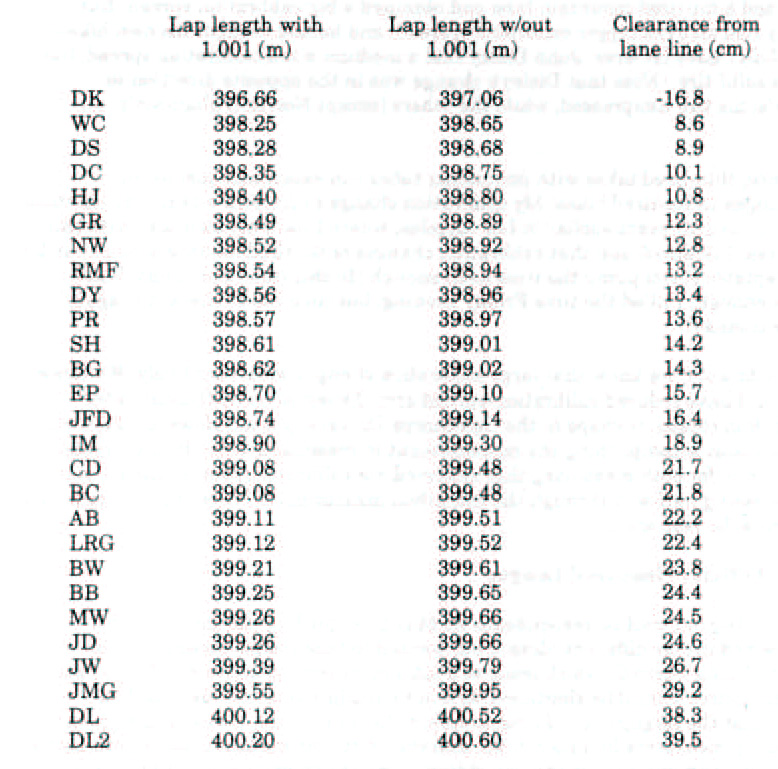Mark,
I agree my model implies zero dependence on friction. But my model assumes that the tyre is a perfect thin membrane, which it is not. It is about 2mm thick and forces will be needed to bend that thick membrane at the point the tyre meets the ground. I have neglected this in my model. It is in this region within 2 or 3 mm of the front edge of the contact point and at the rear edge, that the bending force and quite possibly also the friction forces (and possible slipping) may cause small deviations from my simplified model.
During my google search yesterday one of the hits I found was my own paper written 10 years ago! It is on the web at
http://www.coursemeasurement.org.uk/measurers/report/mnsurfpt3.pdf This morning I have reread it. Although there is a lot of detail which readers will find quite hard to follow, it is relevant to extract one quote from my conclusions:
quote:
I have arrived at a new understanding of the rotating deformed tyre. There are two contributions to the effective rolling radius and hence to the calibration constant. The axle-ground separation is the dominant parameter. In one sense it is determined by the deformation of the tyre as calculated in this article. In another sense it is caused by the circumferential compression of the tyre in contact with the road. There is a circumferential compression as each element of the tyre contacts the road, and there is further compression as it passes under the axle. Without this compression the effective rolling radius would equal the unloaded radius of the tyre. It appears to me that this basic geometrical result is not dependent on the surface roughness.
You will also see from the paper that in my struggles to understand this whole topic I did indeed assume that the coefficient of friction between the tyre and the ground was high enough such that no slipping occured. If I am wrong about this assumption then motorbike tyre model which you describe may be more appropriate.
It is amazing how a night's sleep sharpens one's appreciation of a problem. This morning I realised I had experimental data which supported my model of a thin elastic membrane over the stiffly belted model of the motor bike tyre:
My measuring wheel has a radius R of about 350mm. When I compare the calibration constant which is obtained when riding and with that when pushing my bike I find it increases by about 1%, so the effective rolling radius when riding, Ro, will be 350-3.5 = 346.5mm.
Taking the motorbike tyre equation mentioned above of Ro=R-(R-H)/n where n=3, we see this would give (R-H)=3.5*3 = 10.5 mm, so my front axle should get 10.5 mm closer to the ground when I put my weight on the bicycle. Without doing the experiment I know the compression of the tyre is a lot less than this, so clearly for my tyre at its normal operating pressure of 80psi, n is smaller than 3.
I now realise I can probably measure the value of n using the above mentioned calibration constant change of 1% if I actually go out today and directly measure H when I put my weight on the tyre. Hopefully this will determine whether my thin elastic membrane model, or the stiff tyred motor bike model is more appropriate.
I am afraid we have probably highjacked Jim's thread far too much with this discussion which has moved far off his original topic. If we continue I suggest it should be on a new thread which measurers not interested in such arcane discussions can safely ignore!

